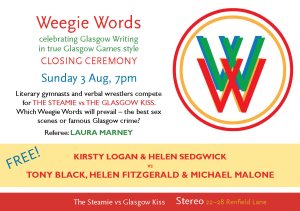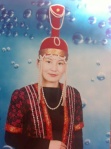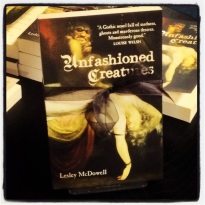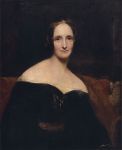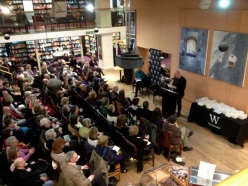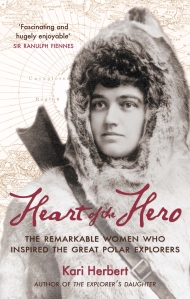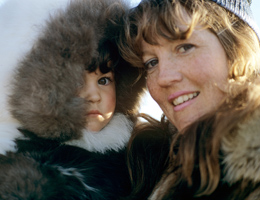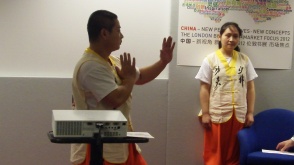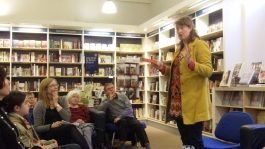St Andrew’s day in Glasgow began with a bright morning overcast by the devastating news of the crash at Clutha Vaults. And so Jim Tough kicked off ‘Saltire Celebrates’ at the Mitchell Library with a note of sadness, and culture minister Fiona Hyslop with a timely reminder that life is precious. Both expressed their sympathies for the families of all involved and paid tribute not only to the emergency services, but to the remarkable, selfless and immediate response of ordinary Glaswegians. The Clutha tragedy infused the proceedings with a potent solemnity. Yet the reports of engaged citizen action helped lift the atmosphere with hope as we were promised a celebration of common values, egalitarian spirit and cultural richness. Thus with mixed emotion we were introduced to some outstanding achievements of 2013 in a new and self-consciously non-hierarchical, informal setting at the Mitchell Library.

The Ramp House
Chairing the first sessions, journalist and commentator Lesley Riddoch invited the award-winning Housing Design architects Michael Hughes, Fergus Purdie and Thea and Ian McMillan to describe their work. These three distinct projects all shared qualities much espoused by Frank Lloyd Wright: their designs revolved around the needs of the users fused with an imaginative, multilevel use of space and unified by a strong sense of the total aesthetic. We saw these embodied in a well-executed upper conversion to a suburban home; a beautifully detailed artist’s residence in Perth city centre; and an ingeniously devised compact urban space transformed into a fully accessible, open-plan, light-filled family home. This latter was furnished with ramps around the periphery affording inclusive wheelchair access as well as views of the whole from a series of integrated small spaces (recalling another Frank Lloyd Wright reference in its echo of the Guggenheim NYC’s pioneering ramp and viewing platforms). As well as ramps, there was much talk of stairs and ladders on this panel, which recurred in later segments. Would it be too far-fetched to extend this as a metaphor for Scotland rising to the challenges ahead?
The important climate challenge work of South Seeds and the Energy Snapshot report, followed by insight on how civil engineers on the M80 Stepps to Haggs link mitigated sound and biodiversity issues (whilst keeping the traffic moving), rounded off what had earlier been mischievously referred to as the ‘suits and testosterone’ part of the day. The panellists proved that for our infrastructure to be planned and delivered with the excellence and reliability that we demand of it, the industry must be about much more than we often give it credit for. An audience member underlined this by pointing out that our engineers deserve greater recognition. And practical contributions to greener solutions in our communities are clearly a priority, now and in the future.
An inspirational array of students followed, with travel bursary recipients for architecture and art (more ladders!) and for creative writing and music. In a rather grey crowd, follically speaking, their youthful vision, creativity and talent – and yes, excellent hair – were warmly welcomed.

Dolina McLennan and James Robertson with Janice Forsyth
Broadcaster Janice Forsyth took over the chairing to introduce leading literary figure James Robertson, who is not only an award-winning novelist and poet but a publisher and tireless advocate for the Scots language. His insightful observations on language and its political dimensions prompted much debate on the topic, including from Magnus Linklater, the society’s President. The ever-popular Dolina MacLennan, meanwhile, reflected on some of the highlights of her all-singing, all-dancing (and acting, broadcasting and storytelling) career on radio, television and stage – including the original ground-breaking 7:84 tour of The Cheviot, the Stag and the Black, Black Oil. For these many achievements she was named Fletcher of Saltoun for 2012. Her successor to the award, Willie McIlvanney, was unfortunately unable to join her on the platform, due to illness.
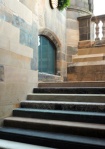
The Scotsman Steps
Stairs reclaimed the focus as Fiona Bradley told the fascinating story behind the newly re-dressed Scotsman Steps, a work of interactive art by Martin Creed that symbolically incorporates multicoloured stone sourced from around the world. So popular are the steps that members of the audience were heard to volunteer on the spot for cleaning duty to help keep the curse of chewing gum at bay. Moving from the capital to the Hebrides, the stonemason’s craft was also central to the creation of Land Art installation and commemorative monument An Suileachan, a haunting landmark as much as a place of reflection that serves to remind us of the Clearances and more.
The final panel of the day was on literature, a fitting subject for a society whose mission is to champion free speech and promote our cultural life. Authors Meaghan Delahunt and Jean Rafferty and prominent literary critic Stuart Kelly joined Saltire research book winner Robin Lloyd-Jones and myself in a discussion on the artist and national literature, taking as its starting point Meaghan’s moving and thought-provoking pamphlet. Writers being a pretty articulate bunch, it wasn’t long before the discussion broadened from national identity to inclusion and belonging, diaspora, giving voice to the marginalised, the evils of global capitalism and monopoly gone mad, poetry, and how our literary life is to be sustained and nurtured in such a challenging writing and publishing environment. Indeed, when Magnus Linklater was invited to launch his essay on the nature of Scottish identity, he noted that much of his thunder had been stolen. Nevertheless, he introduced his own controversial and interesting points to the national identity debate.
It’s a publisher’s job to promote authors, and I make no further excuse for interjecting here brief mention of a novel highly pertinent to this debate. In yesterday’s Herald, no less a literary luminary than Alan Warner selected Victoria Hendry’s A Capital Union in his Books of the Year round-up. Set in WWII Edinburgh, Ayrshire and Stirling, this outstanding debut centres around the lives of young Agnes Thorne and her new husband, Jeff, an SNP activist. Jeff gives up his academic work on the first Scots language dictionary because of his conscientious objection to serving on behalf of Westminster in the war against Hitler. He faces jail, and Agnes, isolated by the contempt of her new community for Jeff’s refusal to fight, must find a way forward. If ever there were a reimagining of history that sheds light on the issues of today, this “brilliantly researched” [Alan Warner], “startlingly accomplished” [Julie Davidson] examination of national identity “with explosive moments of real poetry and narrative power” [Alan Warner] is one I enjoin everyone to read. Its treatment of Scots language is an added bonus, not to mention its fresh, sharp prose leavened with dry humour.
Returning to the Saltire day, a change of pace was provided by the excellent Stanley Odd, led by smart rapper Dave Hook, who brought the house down with poetry of a more contemporary form. Hats off to them for rocking the joint before a not-so-madding crowd! (I was even more impressed to learn afterwards that they had hot-footed it from the Mitchell to the Yes Scotland social evening in Edinburgh, where they reprised their performance.) Musicians from the Royal Conservatoire rounded off the day with rousing jigs and a wistful ballad, whilst the Mitchell’s catering team served up canapés and wine. All were roundly thanked – participants, organisers and attendees – by David Ward for a day positively packed with much to celebrate.
Mindful of a Glasgow in mourning, ‘Saltire Celebrates’ succeeded in showcasing the wealth of our culture and staunch commitment to our values, in a St Andrew’s Day to remember in more ways than one. Let’s hope the call will be heard by the government for robust support to help our creative practice flourish well into a confident future.
 Contraband, an imprint of Saraband Books
Contraband, an imprint of Saraband Books 


